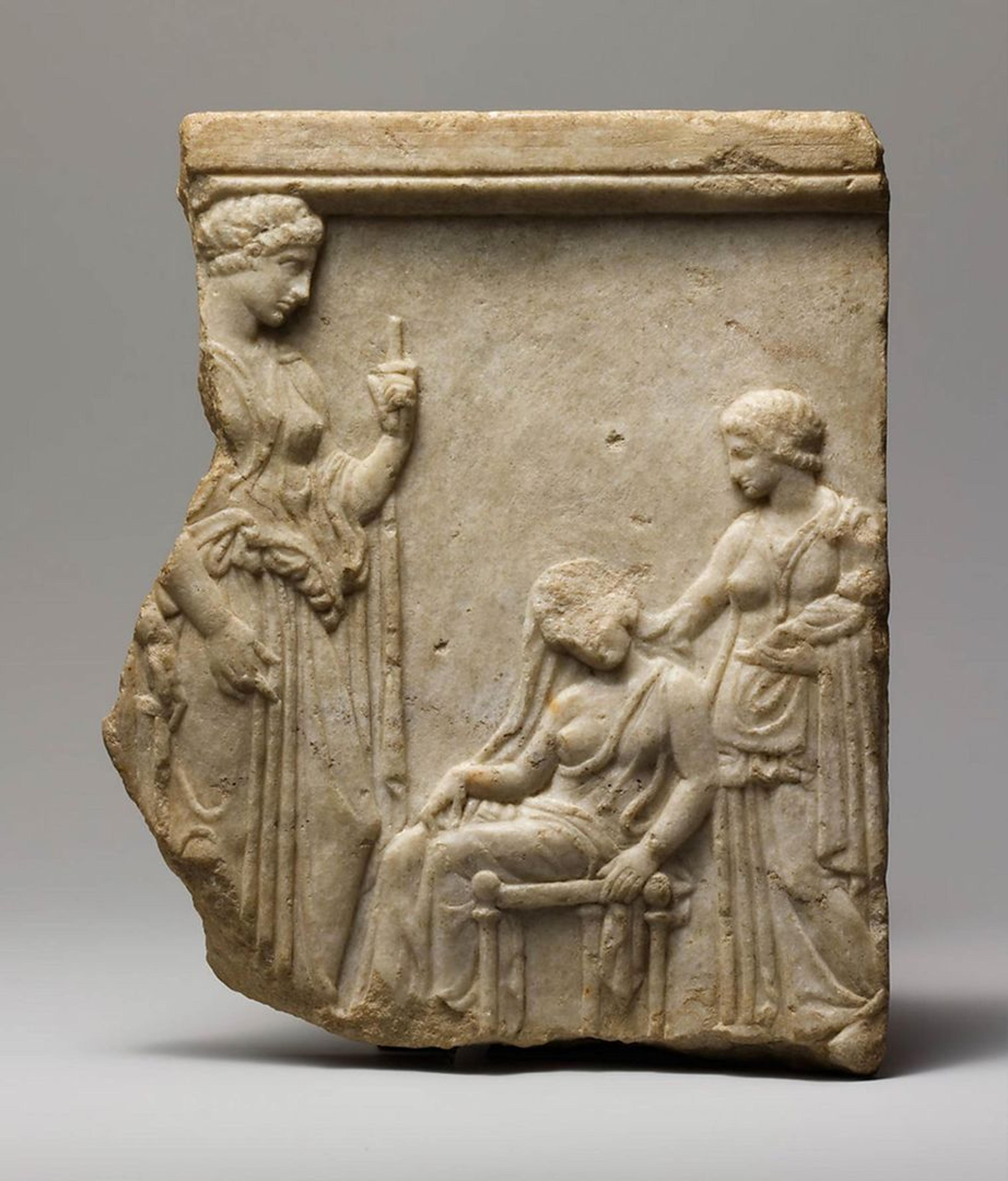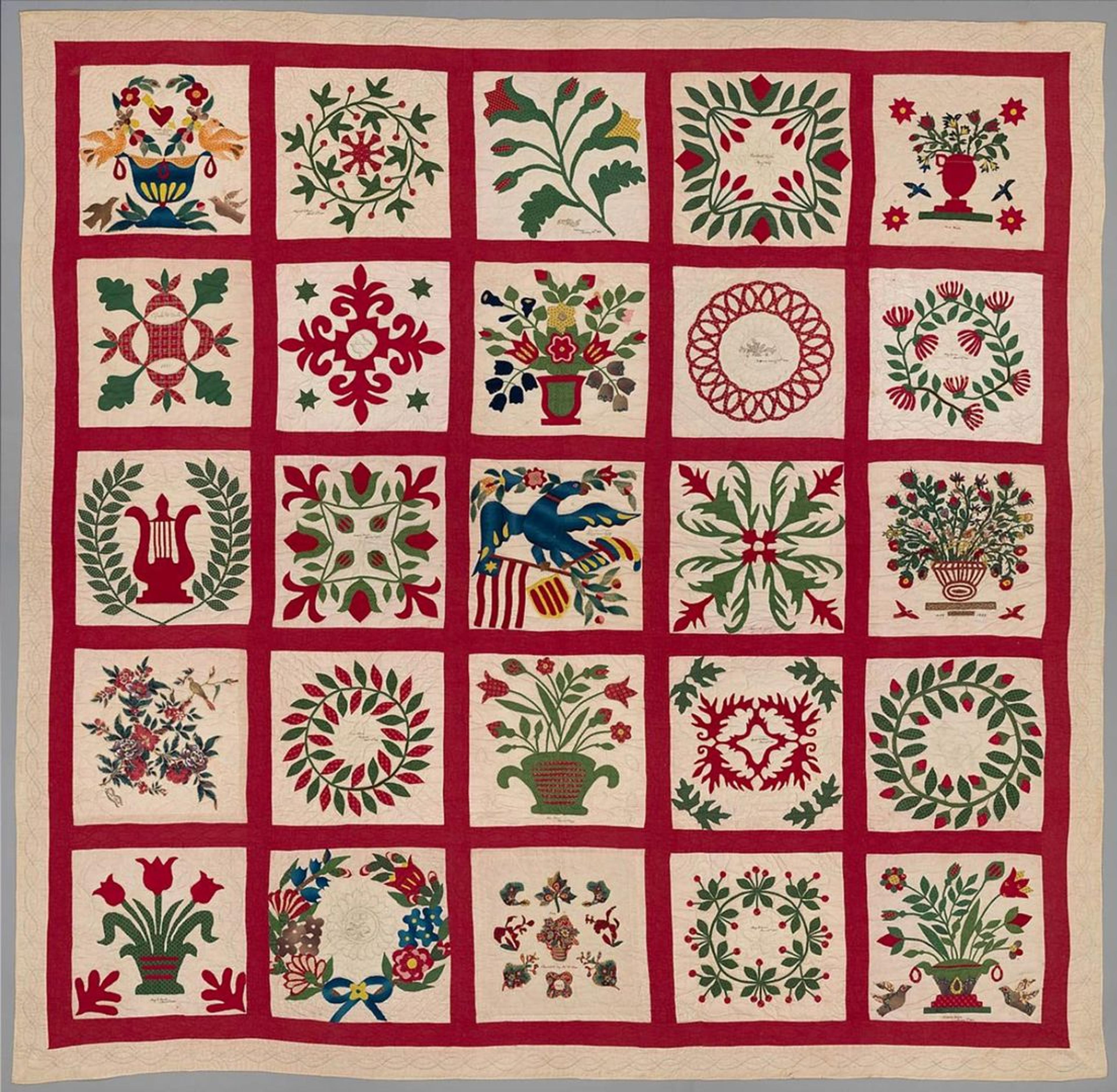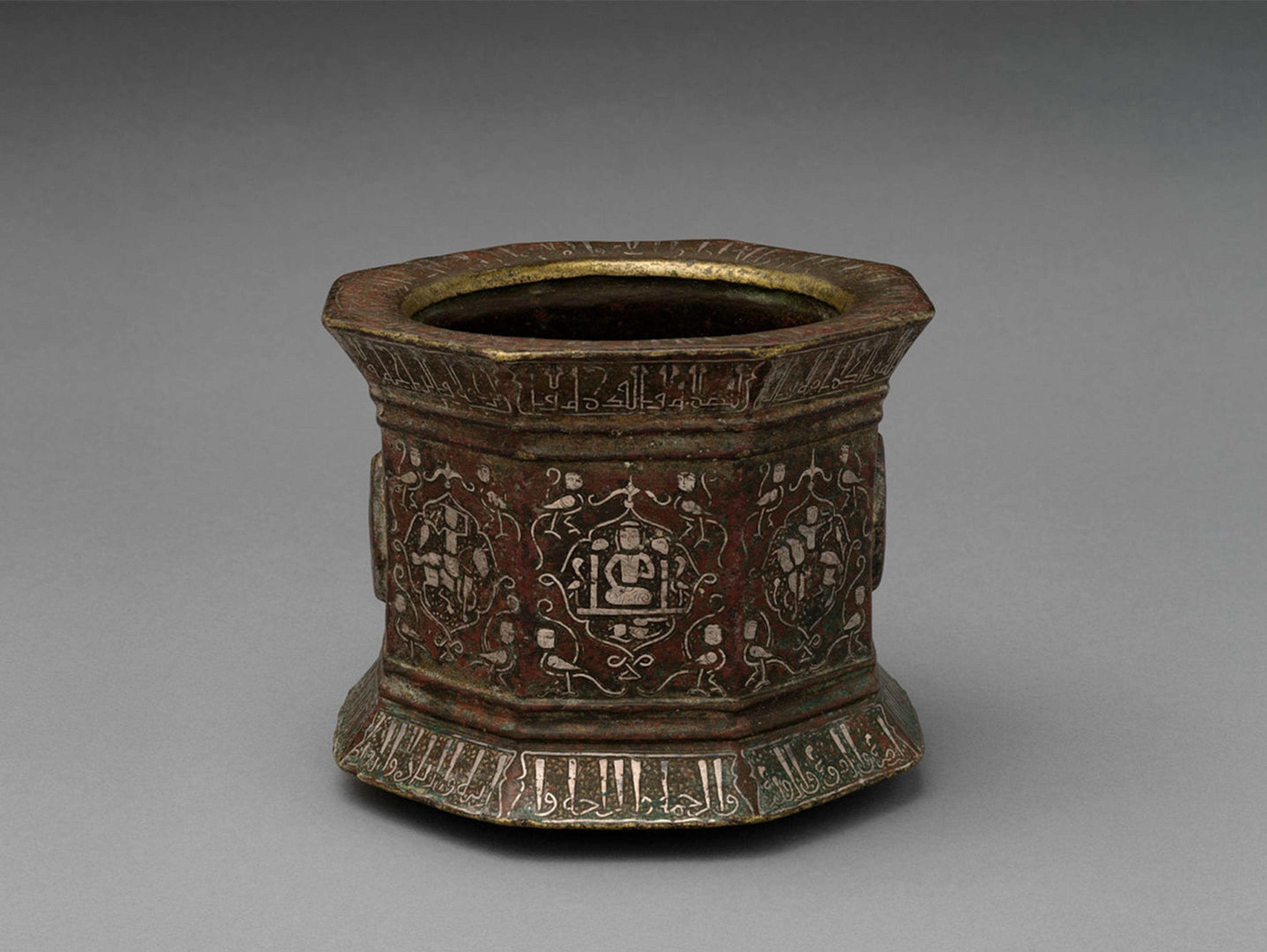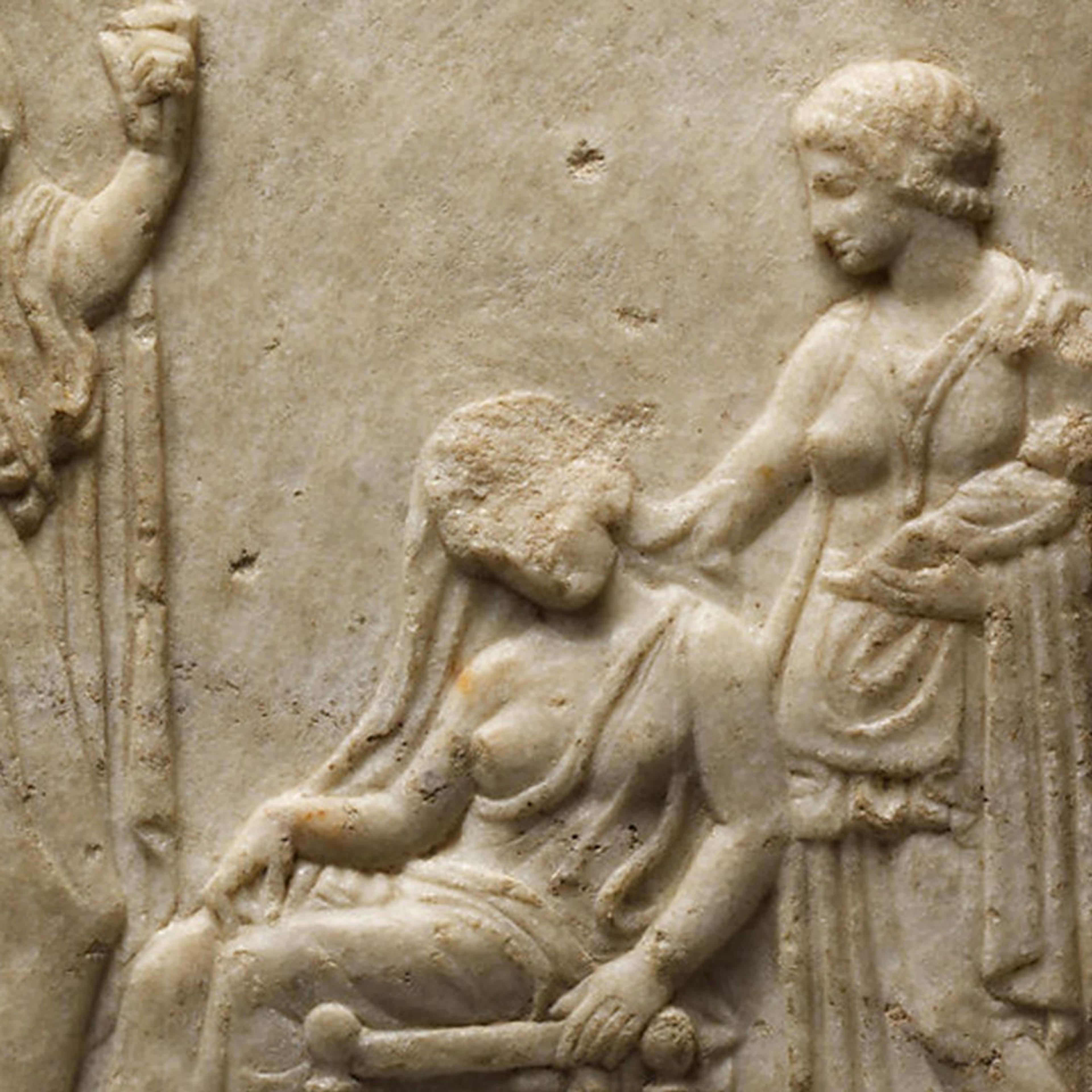For many, living through a global pandemic has brought the significance of health and wellbeing front and center. Some turn to meditation apps, self-help books, and calming routines to find respite. What about art? It reminds us that stress—and methods to cope with it—are anything but unique to our lifetime. What can works from The Met collection offer us in our search for health and peace of mind?
Here, staff across the Museum single out objects and spaces at The Met that represent wellness in diverse and unique ways, from their historical use, to their tranquil presence.
Ancient Greek Marble Votive Relief

Marble votive relief fragment, late 5th century B.C. Greek, Classical. Marble, 10 ½ x 8 ½ in.
(26.7 x 21.7 cm). The Metropolitan Museum of Art, New York, Fletcher Fund, 1924 (24.97.92)
There was a clear relationship between art and well-being for the ancient Greeks. Artistic creations dedicated to the gods frequently accompanied requests for divine intervention in instances of illness, injury, and other health conditions. But such works could also demonstrate gratitude for good health and recovery. This votive relief shows a mother and infant after childbirth. The mother, exhausted, rests while a nurse cradles the newborn. The imposing female figure watching over the scene is likely Hygieia, the goddess of good health. A second deity standing behind her (only the left hand holding a staff is preserved) may be the healing-god Asklepios. The two deities were often worshiped together, and the relief was evidently dedicated in thanks for a successful pregnancy.
— Alexis Belis, Assistant Curator, Department of Greek and Roman Art
Baltimore Album Quilt

Members of the Brown and Turner families. Quilt, Album pattern, begun 1846. Cotton, 83 1/4 × 85 in. (211.8 × 215.9 cm). The Metropolitan Museum of Art, New York, Bequest of Margaret Brown Potvin, 1987 (1988.134)
During uncertain times, keeping hope for the future has been an essential component of maintaining wellness. The bright and cheerful appliqued blocks of this Baltimore album quilt were made to celebrate the birth of a child, Margaret Turner, born on July 31, 1847, and given to her mother, Mary Brown Turner (1818–71). The blocks, created by family members and friends at a time when many children didn’t survive infancy, indicate a steadfast belief in the health of this new child, who would indeed thrive and go on to join the blocks into a quilt for herself about twenty years later.
— Amelia Peck, Marica F. Vilcek Curator of American Decorative Arts and Supervising Curator, Antonio Ratti Textile Center
Pendant with the head of Pazuzu

Pendant with the head of Pazuzu, ca. 8th–7th century B.C. Assyrian. Marble, 1 11/16 × 1 1/16 × 1 1/16 in. (4.3 × 2.65 × 2.65 cm). The Metropolitan Museum of Art, New York, Purchase, Norbert Schimmel and Robert Haber Gifts, and funds from various donors, 1993, (1993.181)
This bronze pendant was likely worn on a necklace. The ferocious head with bared teeth would have faced out, matching the direction of the wearer's gaze. Although the demon shown here is the terrifying Pazuzu, king of the evil wind demons, in this reduced form he has been co-opted to protect rather than menace the wearer. Priests and scribes in ancient Assyria kept extensive records of how to interpret supernatural forces and how to counteract harm that resulted from the malicious attention of demons. Here, Pazuzu’s head served to deflect destructive energy like a mirror, turning evil against evil.
— Sarah Graff, Associate Curator, Department of Ancient Near Eastern Art
Mortar of Abu Bakr ibn ‘Ali ibn Malikzad al-Tabrizi (from Tabriz)

Mortar and Pestle made for Abu Bakr 'Ali Malikzad al-Tabrizi, late 12th–early 13th century. Attributed to Iran. Brass; cast, chased, engraved, and inlaid with silver and black compound, H. 4 1/2 in. (11.4 cm) Diam. 5 3/4 in. (14.6 cm). The Metropolitan Museum of Art, New York, Edward C. Moore Collection, Bequest of Edward C. Moore, 1891, (91.1.527a, b)
Common in daily life throughout the Islamic world from Spain to Central Asia, mortars were used for cooking or preparing materials for writing and painting. Perhaps most importantly, they were an essential tool to keep pace with advances in science and medicine. Heavy, octagonal bronze examples, such as this one, were preferred during medieval times between Anatolia and Iran. Sophisticated mortars were created for affluent and elite classes through the lavish technique of inlaying precious metals. In this example, harpies playfully surround a hunter on horseback, and astrological motifs were incorporated, including two representations of a seated authority figure on a throne. The seated figure, flanked by snakes with dragon heads, symbolizes the pseudo-planet Jauzahr, believed to swallow the moon and sun, causing lunar and solar eclipses. The figural imagery stands together with finely rendered calligraphy on the rims. While captivating the eye of the viewer, these elements function to protect and empower the owner or user of this mortar. Among the benedictory formulae are wishes for safety, security, good health, and continuous survival to its owner, Abu Bakr 'Ali Malikzad al-Tabrizi.
— Deniz Beyazit, Associate Curator, Department of Islamic Art
Bonnefont Herb Garden at The Met Cloisters

Photograph of the Bonnefont Herb Garden at The Met Cloisters. Photo: John M. Hall
Plants were the source of medieval health and healing. Herbs nourished the body, cured insomnia, treated growths, and eased pain. One of the purposes of the Bonnefont Herb Garden at The Met Cloisters is to showcase medicinal herbs and tell the stories of their beneficial uses throughout medieval Europe. Admired for their beauty and fragrance, flowers also held symbolic importance. The golden petals of the pot marigold treated skin afflictions and many believed gazing into the color of the flower could enliven the mind and senses while strengthening eyesight. The joy of a garden comes from the quiet and understanding company of plants. Concentrated and uninterrupted time spent in the Cloisters gardens offers us an experience that is practically indescribable, but the sense of healing certainly comes close.
— Carly Still, Managing Horticulturist, The Met Cloisters
